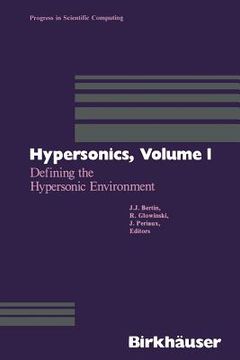Share
Hypersonics: Volume 1 Defining the Hypersonic Environment (in English)
Albertine Sarrazin
(Author)
·
Roland Glowinski
(Author)
·
Jacques Periaux
(Author)
·
Birkhauser
· Paperback
Hypersonics: Volume 1 Defining the Hypersonic Environment (in English) - Bertin ; Glowinski ; Periaux
$ 52.09
$ 54.99
You save: $ 2.90
Choose the list to add your product or create one New List
✓ Product added successfully to the Wishlist.
Go to My WishlistsIt will be shipped from our warehouse between
Monday, June 03 and
Tuesday, June 04.
You will receive it anywhere in United States between 1 and 3 business days after shipment.
Synopsis "Hypersonics: Volume 1 Defining the Hypersonic Environment (in English)"
Tbe task of defining the aerothermodynamic environment for a vehicle flying through the air at hypersonic speeds offers diverse challenges to the designer. He must integrate a wide variety of scientific and technical disciplines, blending mathematical modeling, computational methods, and experimental measurements. Many of the manned reentry vehicles are relatively blunt or fly at very high angles of attack (so that the drag is relatively large) and enter the atmosphere at a relatively low entry angle. As a result, the hypersonic deceleration occurs at very high altitudes. Because the conversion of kinetic energy to internal energy modes occurs in a low density environment, the flow-field chemistry is an im- portant consideration. Experiments on the U. S. Space Shuttle demonstrated the importance of nonequilibrium flow and surface catalycity on the heating to the vehicle. To determine the aerothermodynamic environment of other vehicles op- erating hypersonically at very high altitudes, e. g., the Aero-Assisted Space Transfer Vehicle, the designer may have to consider viscous/inviscid interactions and the modeling of noncontinuum flows. Configurations that have a relatively high ballistic coefficient (such as slender reentry vehicles) and reenter the atmosphere at relatively high angles of attack experience severe heating rates and high dynamic pressures, but only for a short period of time. For these vehicles, continuum flow models incorporating equi- librium chemistry are reasonable.
- 0% (0)
- 0% (0)
- 0% (0)
- 0% (0)
- 0% (0)
All books in our catalog are Original.
The book is written in English.
The binding of this edition is Paperback.
✓ Producto agregado correctamente al carro, Ir a Pagar.

